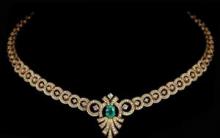Specialization: facade finishing, interior decoration, construction of dachas, garages. The experience of an amateur gardener and horticulturist. He also has experience repairing cars and motorcycles. Hobbies: playing the guitar and much more, for which there is not enough time :)
The most common beginner mistakes
First of all, let's look at how to glue wallpaper is not necessary. The most common mistakes newbies make are:
- Poorly prepared surface. The level of complexity of pasting the joint of planes depends on their quality. If the apartment has crooked corners, then it will not be easy even for a specialist to complete the finish with high quality.
Of course, it is not always possible to make the wall joints ideal, strictly at 90 degrees, but there should be no deviations from the vertical. Therefore, spare no time and effort to prepare the surface - putty the walls or even plaster;

Plaster corners will help to quickly and easily align the outer joints of the walls. During installation, they are leveled, after which they are glued with plaster or putty. The price of corners starts from 30 rubles per 2 meters.
- Wallpaper cutting. As a result of such a decision, the edges of the canvases may diverge, or vice versa - unevenly overlap each other, respectively, the gluing looks messy. Therefore, according to the technology, it is necessary to provide a small inversion to the adjacent plane.

The exception is paper webs, which can be cut vertically. The only thing, in this case, you first need to stick a thin strip of wallpaper on the junction of the walls in case the joints diverge;
- Big twist. If the joints of the walls are even, then such a mistake is not terrible, but in crooked corners a large inversion will cause the strip to deviate from the vertical. As a result, all subsequent canvases will be pasted crookedly;

- The sheets are not fully glued. When gluing the canvas, many beginners do not push it all the way, as a result of which a small area located opposite the inner corner hangs in the air. This leads to the fact that over time the coating begins to peel off and even tear;
- Glue applied poorly. If wallpaper is glued on a non-woven base, then the glue is applied to the surface of the walls, and not to the canvas. In this case, the mistake is to work with a roller, which does not always allow you to completely lubricate hard-to-reach places.
Beginners are often interested in - from what angle to start gluing wallpaper? If they are all even, then it does not matter where you start gluing. Otherwise, start gluing from an even angle to avoid warping the strips on the walls.
Sticking technology
As you know, there are two types of angles:

Each of their types requires its own approach when pasting, therefore, further, we will separately consider the process of gluing wallpaper on external and internal corners.
Internal
The sticker instructions are as follows:
| Illustrations | Description of actions |
 |
Surface preparation. Beginners often prime the walls with their own hands only with a roller, however, as in the case of glue, it is difficult to process corners with this tool with high quality. Therefore, after priming the walls, be sure to “walk” along hard-to-reach places brush. |
 |
Applying glue. If non-woven wallpaper is glued, as mentioned above, the glue is applied to the walls, not the canvas. |
 |
Gluing.
|
This completes the sticker.
outdoor
Now consider how to stick this finishing material on the outer joints of the walls yourself:
| Illustrations | Description of actions |
 |
Surface preparation. As in the previous case, the surface must be primed and glue applied if the vinyl sheets are non-woven. |
 |
Bonding:
If the wallpaper is patterned, with such a small twist, you may need to trim the edge of the second canvas to match the pattern. |
Many people are interested - how to protect the wallpaper on the outer corners? For these purposes, there are special decorative corners that are glued on top of the finish.
Here, in fact, is all the information on how to properly glue wallpaper in the corners.
Output
We got acquainted with all the most important nuances wallpapering corners. Before you get started, watch more videos in this article. If any of your questions on this topic remain unanswered - write comments, and I will be happy to answer you.
Sticking wallpaper on a straight wall is not difficult even for an inexperienced person. But the quality of the repair is determined by the ideal passage of corners, and it is this stage of work that is considered the most difficult. How to glue wallpaper in the corners? There is an easy way to wallpaper the interior and exterior corners the way a remodeler does.
It is known that before starting work it is required to prepare the surface of the walls, and the corners require special attention in this matter. Irregularities should be removed by careful puttying. After the putty has dried, it should be cleaned sandpaper. The surface must be perfectly smooth, otherwise the canvas will peel off. The following rule is observed over the entire area of the walls: before starting work, they must be treated with a primer. You should wait for it to dry completely.
Inner corners: features of wallpapering
The canvas is glued to the wall so that it turns around the corner by 5 cm. It is important to observe exactly this amount of rotation, since a well-chosen allowance allows you to correctly glue the corners with wallpaper. If it is larger, the strip will begin to "wrinkle", and then you will have to make transverse cuts to smooth out the excess. If the allowance is smaller, the likelihood of it peeling off after drying increases.
The turn and the inner fold should be smeared with glue especially carefully and the canvas should be pressed down well in order to securely fix it. Further, on the second wall, adjacent to the previous one, the width of the canvas is measured with a ruler. As a standard, it is 53 cm, for non-woven wallpaper, the roll width is 1 m. The mark on the allowance of the previous strip is fixed at a distance of about 2 cm from the corner. Then a vertical line is drawn through this mark, which is determined using a plumb line. This line is the edge of the canvas, which is glued first on the other side.
At the next stage of work, two layers of wallpaper are cut. To do this, a long ruler is applied to them, along which a sharp wallpaper knife is drawn. The top layer of segments is easily removed or falls off by itself. To remove the lower segments, it rises upper layer wallpaper, then it is additionally smeared with glue and pressed against the wall. Thus, a perfect butt joint should be obtained.
This method is applicable to any type of wallpaper.
Video clipping example.
External corners: how to rotate the canvas?
 The outer ledge must be perfectly flat. If its edge has chips, bumps, they need to be puttied. The work is carried out with a metal spatula, the outer corner must be even and strictly vertical. If these conditions are met, the canvas is wrapped behind it. The edge of the strip is checked by a level, since the edge depends on it. correct location following canvases.
The outer ledge must be perfectly flat. If its edge has chips, bumps, they need to be puttied. The work is carried out with a metal spatula, the outer corner must be even and strictly vertical. If these conditions are met, the canvas is wrapped behind it. The edge of the strip is checked by a level, since the edge depends on it. correct location following canvases.
The second method of gluing is carried out in the same way as gluing in inner corners. The strip starts around the corner by 5 cm, the next one is glued with an overlap on this allowance. Then, under the ruler in the middle of the overlay, a vertical cut of two layers of wallpaper is made. It is important that the ruler does not move while working with the wallpaper knife, otherwise the cut may go to the side. That is why it should be metal, as it has greater rigidity than plastic.
These methods of processing corners are suitable for wallpapers that are pasted end-to-end. They do not shrink after drying, so the seam will not open and the wall will not be visible. but paper wallpaper require compliance with a technological lining 0.5 cm wide, as they shrink in width. In this case, with the help of a plumb line, the strict verticality of the wrapped edge is controlled. If he lay on the wall incorrectly, draw a line and cut off the excess. The next strip is glued with an overlap of 0.5 cm.
High demands are now placed on the type of interior. The owners of Khrushchev houses, who repeatedly glued paper tapestries in their apartments, now do not dare to start repairs with their own hands. They don't know how to stick wallpaper in the corners to make the room look up to par. It is more difficult to work with vinyl and non-woven fabrics. They are heavy and require certain skills. If you properly seal the corners with wallpaper, then the next repair will not be soon.
How to glue wallpaper in the corners?
Rough corners scare novice craftsmen, and even ones are a rarity.
It is difficult to bring two planes together perfectly. Therefore, even when smooth walls Ah, the corners have a lot of deviations. I had a lot of work and Vadik had to finish the aunts' apartments on his own. He did not dare to start, because he did not know how to properly glue the wallpaper in the corners.

Sticking wallpaper in the room
I decided in practice to show my friend how to wallpaper the rooms of old houses. One of my brigade did apartment renovation in historic building. Vadik could see:
- preparation;
- alignment methods;
- how to use perforated corners;
- room decoration.
The technology for finishing corners with wallpaper of all types is the same. Only thin paper tapestries and fiberglass cobwebs can differ. Work must start from front door rooms when gluing end-to-end. When applying the edge of the strips of thin tapestries - from the window.
Preparation and leveling simplifies subsequent finishing

Correctly glue the wallpaper in the corners
Making repairs in old apartments, I always putty the walls and install perforated corners. They simultaneously serve as beacons and protect the ledges from destruction. I choose cardboard if the inner corners have slight irregularities. In all other cases, I use a PVC profile.
- I check the verticality of the walls with a laser level. You can use a plumb line. I choose a base more even surface.
- I putty and drown the profile in the solution, setting it in level.
- I smooth after drying with another layer of putty. Under paper and non-woven wallpaper, I use an additional finishing composition.
Related article: Wallpaper for the children's room
If customers do not want to spend money on leveling and corners, then I simply close up large depressions. I glue the corner with wallpaper, cut off a strip 10 - 12 cm wide. I place it evenly on both walls, make cuts for a snug fit. After that, it is easier to glue the wallpaper in the corners. If the upper canvas has to be cut or the paper tapestries burst, then thanks to the background of the same material, this will not be noticeable.

Self-glue wallpaper in the corners
Advice! It is better to align the corners well once than to fool your head every time you wallpaper a room.
We paste over the protrusions
The last strip in front of the corner is cut off with the expectation that it will go onto another wall by about 2 - 5 cm, depending on the curvature. The more drops, the wider the entry. It must completely cover the most convex place by at least 8 mm.
For a better fit, I make notches with a sharp knife or just cuts with scissors. It is desirable that they be inclined with respect to the edge. I close the corners with wallpaper and smooth out the main part first, then the strip around the corner.

How to glue wallpaper in the corners of the apartment?
Before starting to glue the wall from the corner, we measure the width of the trellis and draw a line vertically along the level. I check additionally the condition of the corner. The side surface of the strip should run over the deepest dent. I stick strictly vertically, according to the markup. Near the corner, the edge lies flat. The protrusions are hidden under the wallpaper pasted before.
Wallpapers with large pattern it is better to cut so that the lines match. A small shift will be imperceptible.
thick vinyl wallpapers I cut along the ruler at a distance of 2 mm from the edge of the upper canvas. With a sharp knife, I cut both pieces strictly vertically along the entire height. I remove the excess and the canvases lie end-to-end. For strength, I enclose a painting grid.
For example, such wallpaper options are allowed to be subjected to wet cleaning, they perfectly hide the flaws of uneven walls and long time retain their attractive design. In addition, non-woven wallpaper is easy to fix on the wall, because it is a very easy-to-use finishing material that does not form vertical, horizontal folds and bubbles. Traditional external and internal corners that are difficult to finish can be decorated with non-woven material without experiencing serious difficulties. To do this, you just need to take into account some of the nuances.
To finish the corners of the room with non-woven wallpaper, do not try to use a single piece of wallpaper in order to decorate both walls that meet in the corner. In this case, the wallpaper will “lead” almost with a guarantee, and the resulting folds will have to be cut, which will negatively affect appearance walls. However, even if this can be avoided, the crooked angle (unfortunately, this is a standard practice for domestic builders) may affect the further design of the apartment with wallpaper. After all, non-woven wallpaper is applied to the walls "butt to joint", respectively, the skew allowed when passing the corner will force all other webs of material to be cut.

Finishing the corners of the room with non-woven wallpaper
The correct wallpapering in the corners with wallpaper made of non-woven cellulose material is as follows:

If everything was done without errors, then the joint between the strips of non-woven wallpaper will be difficult to notice, it will need to be processed with a roller or rags.
outside corner

Features of pasting wallpaper on external corners in the room
External corners in rooms are much less common than internal ones, but they do come across. The technology of applying non-woven wallpaper in this case is almost identical to the passage of internal corners.
At the first stage, we are engaged in geometric surveys:
- We measure the distance - from the edge of the last pasted strip to the outer corner - and prepare the next strip of wallpaper so that, after fixing it on the wall, it “wraps” around the corner by no more than 50 millimeters.
- We determine the point of the wrapped strip closest to the corner, it is from it that we will begin to glue a new strip of wallpaper.
Accordingly, measures are taken to apply a vertical strip and remove wallpaper residues.
By the way, if the outer corner is even, as evidenced not only by visual inspection, but also by checking with a plumb line, it is allowed to use one strip of wallpaper. However, it should be borne in mind that possible discrepancies should not exceed 5 millimeters.
paper wallpaper
Paper wallpapers are still popular with finishing works inside the apartment. This is due to their very affordable price and sticker method. It is worth noting that paper wallpapers are not able to hide serious defects in wall surfaces and curved corners. The method of fixing paper wallpaper on the walls is not too different from a similar technology with non-woven wallpaper.
The simplest option involves the sticker of this finishing material "overlap". In other words, the wallpaper panel is glued in the corner with a slight overlap (1-1.5 centimeters) on the adjoining wall, and the next strip is glued directly in the corner itself. This method is distinguished by efficiency, but the visual effect leaves much to be desired.

Paper wallpaper - application features
The second way to glue wallpaper in the corners is suitable even for slightly "littered" walls that form a corner. The initial stage is fully consistent with the previous method, the only difference is that the overlap on the adjacent surface is somewhat larger. The next strip of wallpaper is also glued “overlapped”, but its farthest side from the corner should be oriented along vertical stripe applied with a plumb line. The canvas should lie down with an overlap of 2 centimeters, while having a common border with the adjacent wall. Then along the drawn vertical lines special knife both layers of the finishing material are cut through, and after removing its remnants, you can proceed to the further design of the apartment walls. Do not forget to process the cut line with a special roller.
As you can see, the method of gluing paper wallpaper in the corners is very similar to the method of fixing non-woven wallpaper.
Finishing the outer corners with paper wallpaper
External corners meet in the form window slopes, decorative plasterboard partitions, etc. In any case, the geometry of such an angle is extremely important, because such an angle, unlike the internal one, is constantly in sight. Therefore, possible defects in the outer corner should be eliminated in advance and only after that proceed with wallpapering.

Corner wallpapering technology
The technology of wallpapering on the outer corner is very similar to the second method of fixing wallpaper on the inner corner. However, the "overlap" on the adjacent wall should not exceed 5 centimeters, this is due to the fact that a large overlap with an uneven wall surface will be difficult to level. Depending on the quality of the wall and wallpaper, wrinkles may appear, they are eliminated with the help of special horizontal cuts on the canvas. The next strip of wallpaper is glued close to the corner, but its far edge must run along a pre-defined vertical strip. Next, using a paint spatula, building level or a metal ruler, we press the center of the overlap and cut off both canvases with a wallpaper knife. After the remnants of the wallpaper are removed, they need to be glued and treated with a roller. The docking joint in this case will be offset by a few millimeters from the corner itself, but this is how it should be. Otherwise, there is a risk of tearing the wallpaper as a result of careless movement.
Little tricks when working with wallpaper

Finishing material is of key importance when working with internal and external corners:
- Paper wallpapers should not be pre-applied with glue, there is a very high chance that they will soak through it and tear in your hands. However, this type of wallpaper does not require trimming when passing corners, because due to the fact that the wallpaper is very thin, it is enough to iron the joints with a dry rag or roller.
- Vinyl wallpapers, on the contrary, are best treated with glue in advance and let them absorb it. Vinyl wallpaper is quite dense material, and with advance prepared canvases will be easier to work with.
- On non-woven wallpaper, you do not need to apply glue, it is applied only to the wall.
- The general rule for all types of wallpaper is that they should be glued in rooms where there are no drafts, air conditioners and heaters do not work.
Do not forget that the walls must be treated with a primer before wallpapering. In addition, the adhesive must match the type of finishing material such as wallpaper. Firms specializing in the production various kinds wallpaper, indicate in the accompanying documents the most suitable adhesive mixtures for their products.
Necessary tools and materials

Tools and materials for wallpapering an apartment
In order for the design of the apartment to be wallpapered quickly and successfully, it is advisable to take care of the availability of the following tools and materials in advance:
- dry rag or sponge to eliminate excess glue;
- building hair dryer;
- brush;
- a vacuum cleaner;
- ladder or scaffolding.
Results
Wallpaper, despite all their flaws, as a kind finishing materials, used for interior decoration of an apartment, are one of the most popular, this is due not only to their price, but also to the fact that they can be pasted without the help of third-party specialists.
Wallpaper is one of the most available materials for finishing even not quite high-quality and even walls. They can perfectly hide spots of unevenness and even distortions. But gluing them on a completely curved surface is not easy, inconvenient, sometimes even impossible. Therefore, the first step is to maximize, and the corners should be given the most attention. If in other parts of the wall the wallpaper cloth acquired elasticity from impregnation with glue and could stretch, then at curved corners, both internal and external, surprises in the form of distortions and large folds are not ruled out.
Even at perfectly flat corners, difficulties sometimes arise. Therefore, before starting work, you should be well prepared for gluing wallpaper in the corners.
Where to start gluing?
Many recommend from the window, and someone from the door. In reality, there is no difference, if you do not take into account the past trends, when the wallpaper had a special edge for overlapping. Because of what, they had to be glued with an overlap of at least 1 cm. In this case, the best option was to glue it from the far wall with a window. So there were no visible seams at the entrance to the room. Today, wallpapers are produced without this edge, and it is recommended to glue them end-to-end. Wallpapering in corners is no different from flat spaces.
The first step is to decide what wallpapers are and how much glue is required to impregnate them:
- Paper ones require moderate impregnation and pre-lubrication of the wall.
- Vinyl ones require good impregnation, especially when pasting them in the corners, as they are quite thick and dense.
- Wallpaper on non-woven base requires impregnation only walls.
Used tools for pasting wallpaper.
Often there is a pattern on the wallpaper that is unstable to mechanical damage. Therefore, to smooth them out, a special rubber roller or brush is required.
Interior corner finishing
Having dealt with the types of canvases and the amount of glue, you can get to work. If the wallpaper began to be glued from the corner, then without fail, using a long level and a metal ruler, it is necessary to mark in the form of a vertical line.

It should be located so that when gluing the sheet lies with a twist at an angle of 2-3 cm. The inner corner is the least noticeable, so if a slight overlap forms there, it will not be very noticeable.

If, when gluing the canvas, the edge of the sheet turned out to be not straight, then it can be cut with a wallpaper or mounting knife. In this case, after each incision, it is recommended to break off the blade. Otherwise, during subsequent use, scoring and tears will occur.
The corner is where the wallpaper is most likely to peel off the wall. Therefore, you should not feel sorry for the glue here, the best option would be to pre-impregnate the surface in several layers.
For reliable gluing of corners, use special glue. PVA glue is perfect.
Wallpapering on outside corners
The rules for pasting wallpaper on external corners are to perfectly fit the canvas. The overlap option will not work here, because it will be clearly visible. The best option will be "Cutting". But in order to beautifully decorate the outer corner, its surface is necessary. 
Further, it is recommended to pre-lubricate the surface of the wall with glue in several layers. If necessary, a brush should be used, because it is often impossible to penetrate small cracks with a roller. The pre-impregnated canvas is glued to a corner with a bend on the second wall of 2-3 cm. In this case, the edge of the sheet is almost always uneven. This is due to the geometry of the walls and their imperfection. The second sheet of wallpaper is glued with an overlap of 5-8 cm on the previous one. This is necessary so that it can be conveniently grasped when removed.
Then, using a plumb line, and it is better to use a long level, an incision is made on both canvases with a new blade of a mounting knife.
It is not worth saving here, because when the blade becomes dull, burrs can form on the surface, which will become very unattractive.
After the incision is made, the excess piece is removed, and the edges of the joined sheets are carefully peeled off. The cut residue is removed from under it, and the wallpaper is glued into place. You can add glue if needed.











Can't understand the meaning of life
Mate Brewing Methods
Trollface quest games Black humor games
Dark spots in photos?
Rules of the game Bald in VK. Scrabble nerd. The purpose of the game Balda